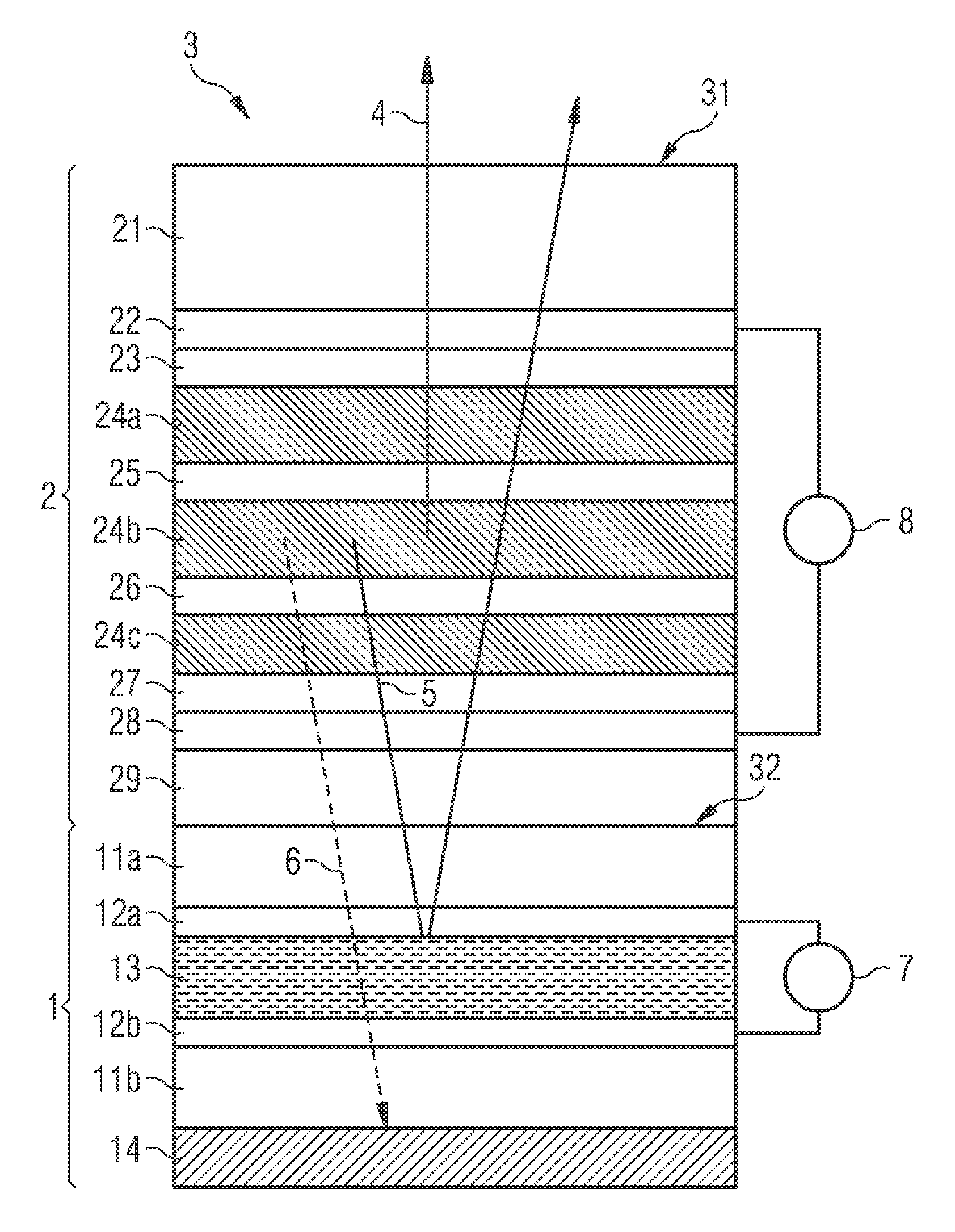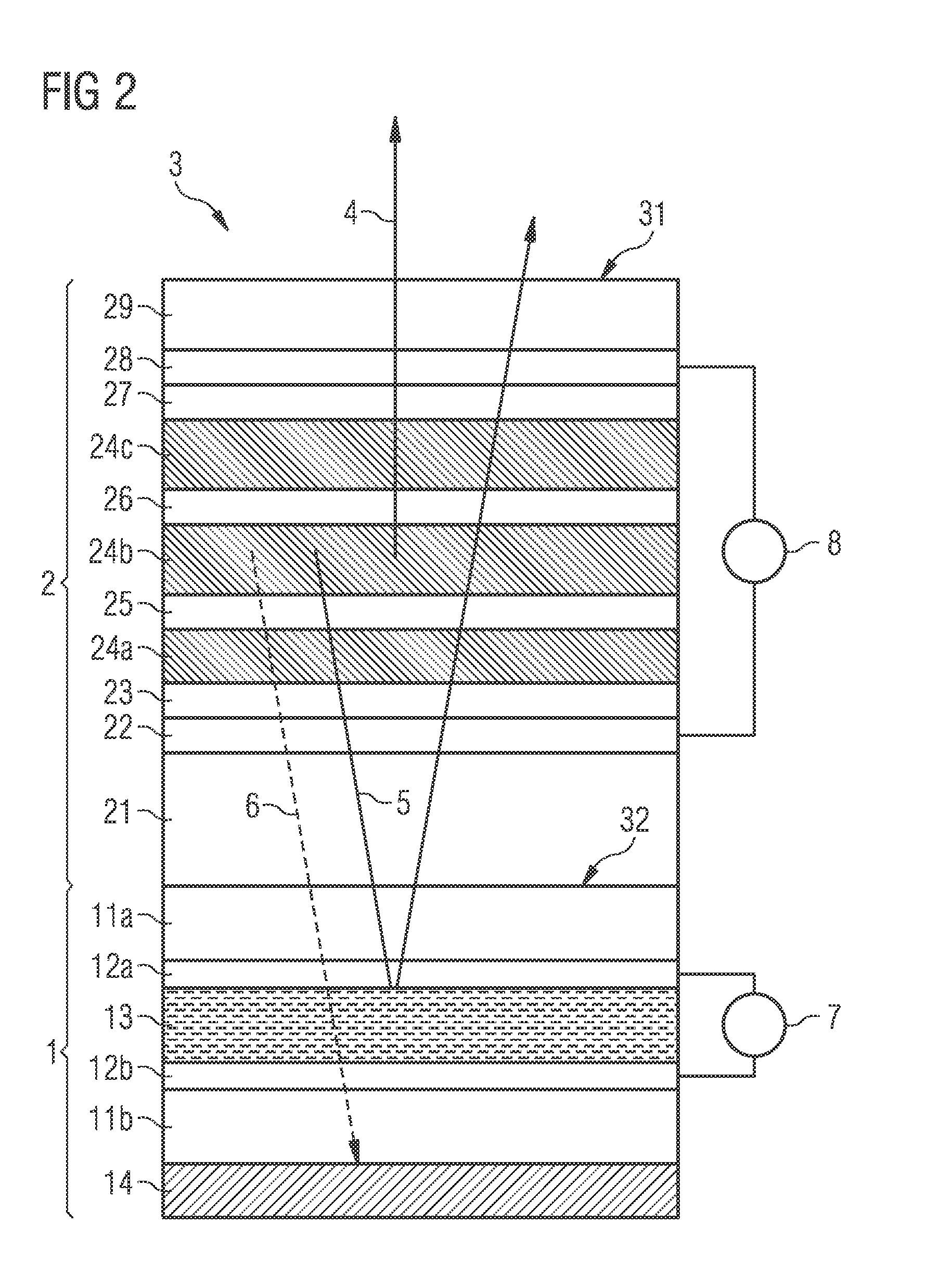Optoelectronic Component
a technology of optoelectronic components and components, applied in the field of optoelectronic components, can solve the problem of increasing the production effort of organic light-emitting diodes
- Summary
- Abstract
- Description
- Claims
- Application Information
AI Technical Summary
Benefits of technology
Problems solved by technology
Method used
Image
Examples
first embodiment
[0029] the optoelectronic component 3 shown in FIG. 1 has an organic light-emitting diode 2, which is provided for emitting radiation 4 through a main emission surface 31. The organic light-emitting diode 2 is preferably a white light emitting organic light-emitting diode, in which the white light is generated by additive colour mixing of the radiation emitted by a plurality of organic light-emitting layers 24a, 24b, 24c.
[0030]In order to generate white light, the organic light-emitting diode 2 has at least two, or preferably at least three, organic light-emitting layers 24a, 24b, 24c. For example, the organic light-emitting diode 2 can have a first organic light-emitting layer 24a for emitting blue light, a second organic light-emitting layer 24b for emitting green light and a third organic light-emitting layer 24c for emitting red light. The plurality of organic light-emitting layers 24a, 24b, 24c is arranged on top of each other in the layer stack of the organic light-emitting d...
second exemplary embodiment
[0046]It can therefore be advantageous to orient the organic light-emitting diode 2 towards the liquid crystal element 1 in such a way that the stronger emission of the organic light-emitting diode 2 ensues towards the rear side 32. Such an exemplary embodiment is shown in FIG. 2. In this exemplary embodiment the organic light-emitting diode 2 is structured as in the first exemplary embodiment, but rotated by 180° vis-à-vis the liquid crystal element 1 compared with the first exemplary embodiment. In the second exemplary embodiment the substrate 21 of the organic light-emitting diode 2 thus faces the liquid crystal element 1 and an opposite surface of the transparent encapsulation 29 forms the main emission surface 31. In this exemplary embodiment, for example, it may be provided that a maximum of 40%, advantageously a maximum of 35% or preferably a maximum of 30% of the emitted radiation is emitted towards the main emission surface 31 and correspondingly a minimum of 60%, advantage...
PUM
 Login to View More
Login to View More Abstract
Description
Claims
Application Information
 Login to View More
Login to View More - R&D
- Intellectual Property
- Life Sciences
- Materials
- Tech Scout
- Unparalleled Data Quality
- Higher Quality Content
- 60% Fewer Hallucinations
Browse by: Latest US Patents, China's latest patents, Technical Efficacy Thesaurus, Application Domain, Technology Topic, Popular Technical Reports.
© 2025 PatSnap. All rights reserved.Legal|Privacy policy|Modern Slavery Act Transparency Statement|Sitemap|About US| Contact US: help@patsnap.com



